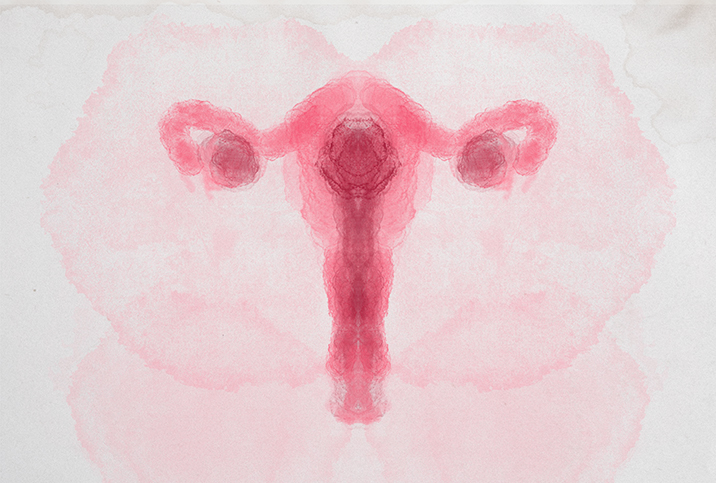Advancements in Treatment for Ovarian Cancer

While ovarian cancer is relatively rare, affecting only 1.3 percent of women, it is one of the more deadly forms of cancer. Due to the difficulty of detection in the early stages, it ranks fifth in cancer deaths among American women and first among gynecological cancers. Ovarian cancer is characterized by the uncontrolled growth and reproduction of abnormal cells in the ovaries and frequently impacts the fallopian tubes or other pelvic organs. Types of ovarian cancer include epithelial, stromal cell and germ cell.
Symptoms of ovarian cancer can be vague and nondescript, which is why early detection is so difficult. Abdominal swelling and pelvic pain, pain during sex, vaginal discharge, urinary and bowel changes, feeling full quickly when eating and unexplained weight loss may all be signs of ovarian cancer. The risk factors include being older; having a family or personal history of ovarian, breast or colorectal cancer; a personal history of endometriosis; inheriting certain gene mutations (BRCA1, BRCA2); taking hormone replacement therapy (HRT); and beginning menstruation before age 12 or menopause after age 50.
Untreated, ovarian cancer can spread throughout the pelvic and abdominal cavities by metastasis. Treatments include surgery, chemotherapy, hormone therapy, targeted therapies, immunotherapy and palliative care. Ovarian cancer remains a concerning diagnosis, with a five-year survival rate of 90 percent for Stage I epithelial ovarian cancers, but just 39 percent for stage 3. With 80 percent of patients experiencing recurrence, advancements in treatment are essential to improve outcomes.
Standard treatment
Ovarian cancer is most often treated with a combination of surgery and chemotherapy. Advanced cases may require chemotherapy before surgery, to reduce tumor size or enable a less-invasive procedure.
Surgery for early-stage ovarian cancer may include removal of one or both ovaries, as well as the removal of the fallopian tubes and, in some cases, the uterus. Advanced cancers may require additional surgical procedures. Surgery is a component of ovarian cancer treatment in 80 percent of cases, according to a 2016 study from the University of Pennsylvania School of Medicine, often followed by chemotherapy or radiation.
Chemotherapy treats ovarian cancer by targeting and killing fast-growing cancer cells. Chemo is typically administered via intravenous or oral medication for weeks or months, with recovery periods in between. Most common chemotherapy medications include a platinum-based drug and a taxane-based drug. This form of treatment is typically effective with 80 percent of patients showing response, and some may be eligible for PARP (poly adenosine diphosphate-ribose polymerase) inhibitor maintenance therapy afterward, which can help delay or prevent relapse. Hormone therapies block hormones to slow or stop cancer and may also be incorporated into treatment.
Palliative care is an important part of ovarian cancer treatment, focused on improving comfort, minimizing side effects and supporting a patient and her family through the long and difficult journey.
New treatment advancements
Recently, targeted therapies and immunotherapies have become viable and successful options for ovarian cancer patients. In cases of relapse within six months of initial treatment, targeted therapies can be better tailored to an individual’s specific cancer cells.
In June 2018, the Food and Drug Administration (FDA) approved a targeted therapy called bevacizumab (Avastin), aimed at inhibiting the growth of the tumor blood vessels. A few months prior, in April 2018, a PARP inhibitor called rucaparib (Rubraca) was approved for maintenance treatment of primary peritoneal ovarian cancer and, in January 2019, for maintenance of platinum-sensitive relapsed high-grade epithelial ovarian cancer.
As recently as April 2020, the first, once-daily oral PARP Inhibitor—called niraparib (Zejula, GlaxoSmithKline)—was approved for maintenance treatment for platinum-responsive patients. It was found to lower the risk of ovarian cancer progression in women with a BRCA mutation by 60 percent in the PRIMA clinical trial. A week later, another PARP inhibitor called olaparib (Lynparza) was approved for the initial treatment of ovarian cancer, marking a significant change in the use of options previously reserved for cases of recurrence, or cancers that hadn’t responded well to other treatments. The SOLO-1 clinical trial found olaparib effective for extended progression-free survival in 60 percent of patients for three years after treatment, compared to 27 percent who received a placebo.
Immunotherapy is another main area of ongoing clinical research in the fight against ovarian cancer. One immunotherapy medication, pembrolizumab (Keytruda), is currently approved by the FDA for high microsatellite instability (high MSI-H) tumors and was studied in a 2020 KEYNOTE-100 clinical trial to determine efficacy in ovarian (and other gynecologic) cancer patients. It uses the body’s immune system to fight cancer cells, and is appropriate only for certain patients whose cancer is advanced.
Technology can help
With the rise of numerous ongoing clinical trials for targeted immunotherapies, and with PARP inhibitors and combination treatments showing exciting promise, the future for ovarian cancer sufferers, including those with recurrence, is measurably brighter. While an ovarian cancer diagnosis can be frightening, every year there are breakthroughs that provide new methods to combat ovarian cancer and increase the odds of a more successful outcome.

















